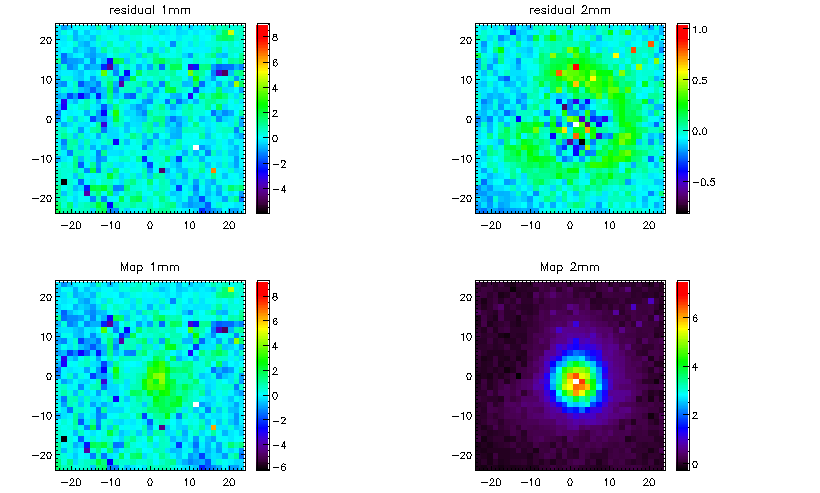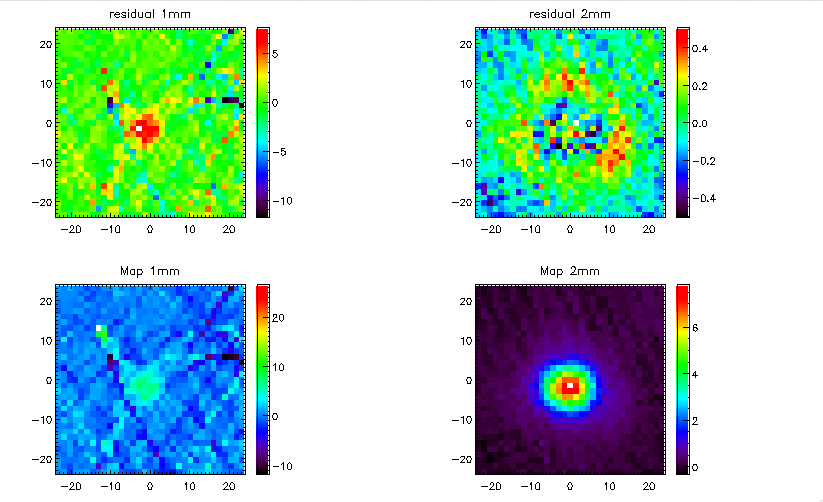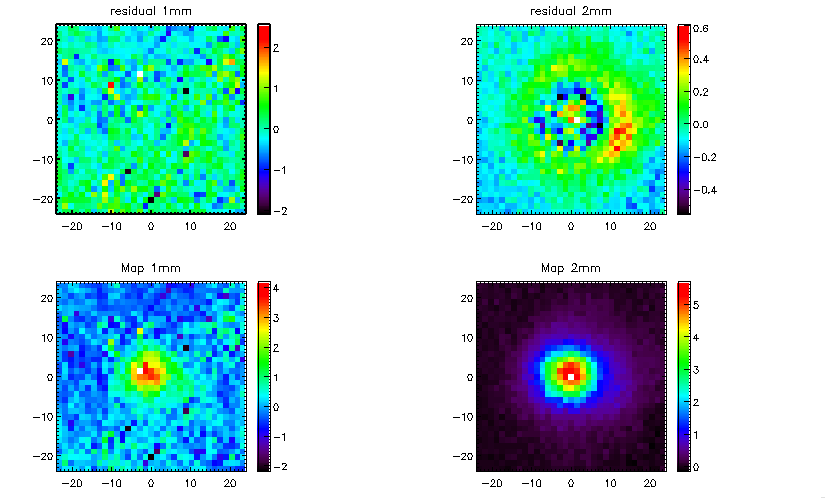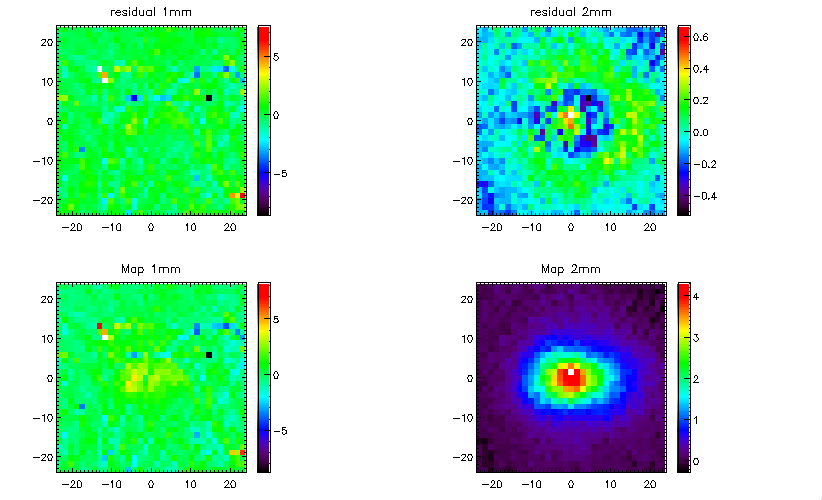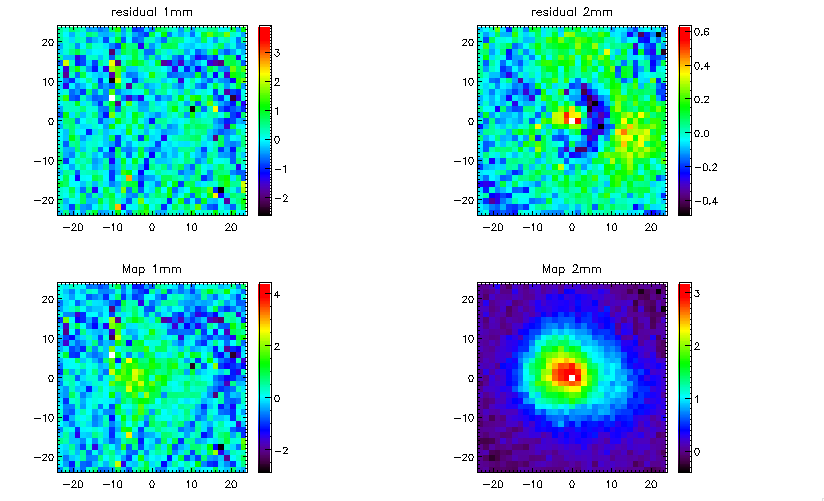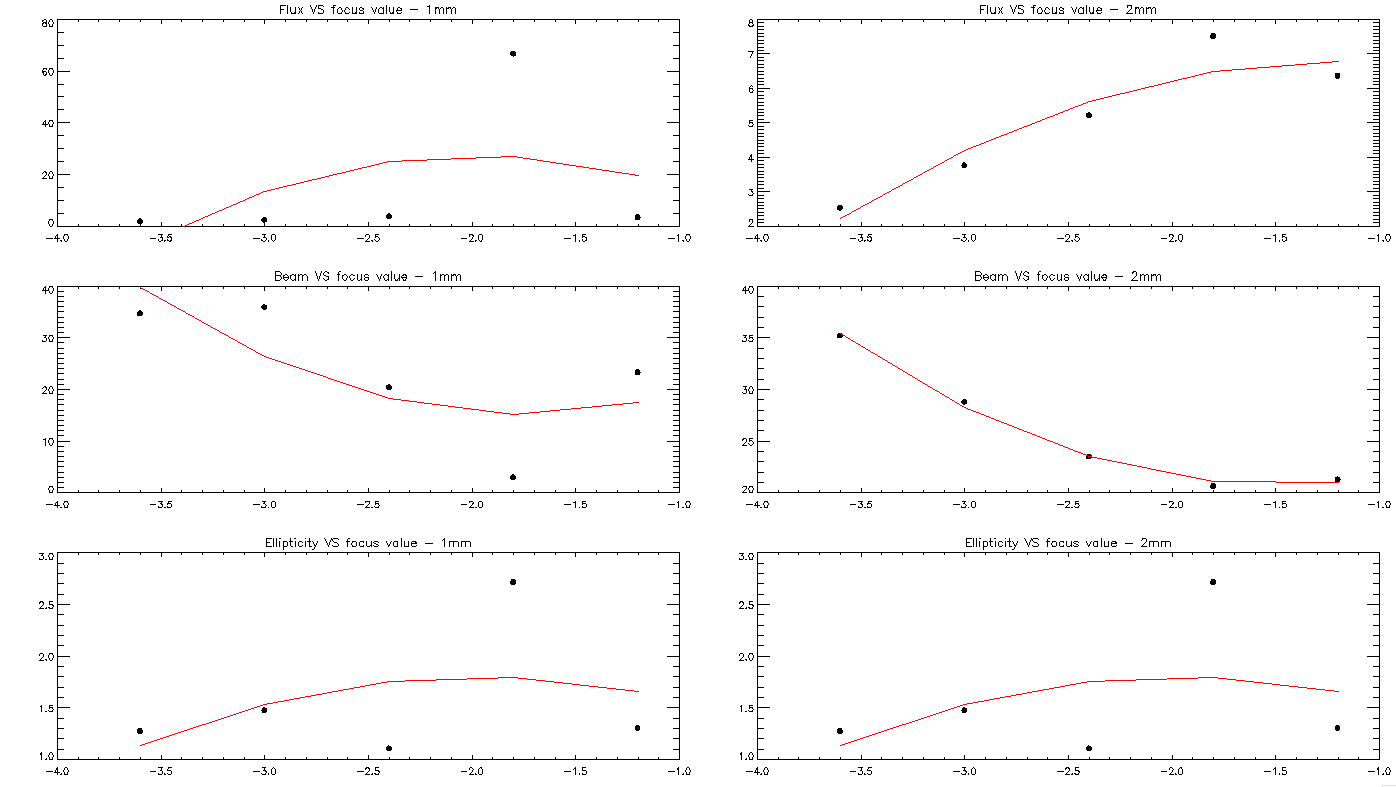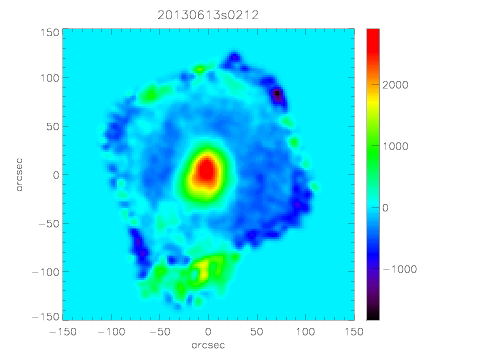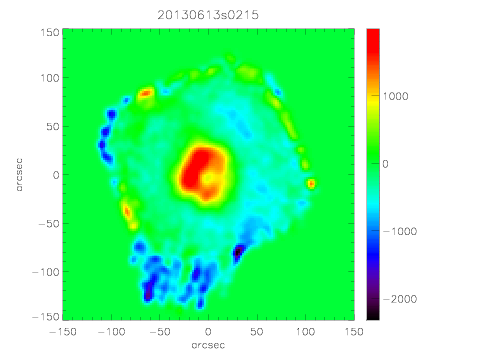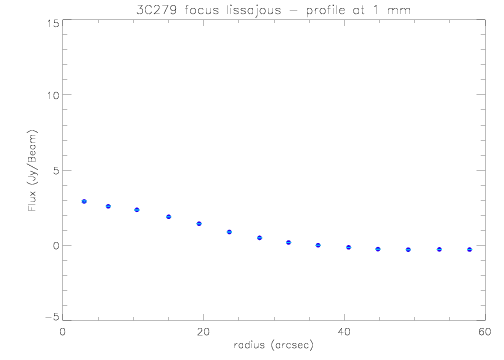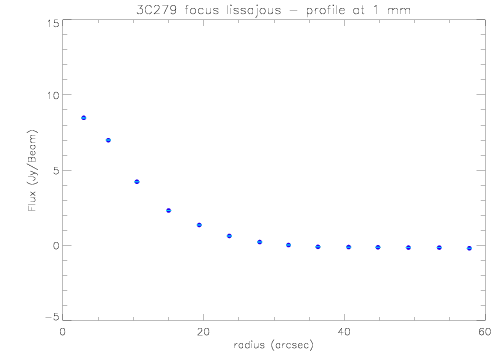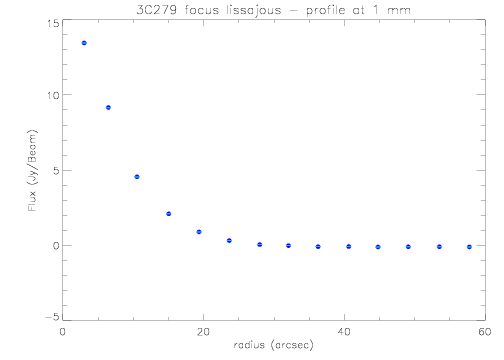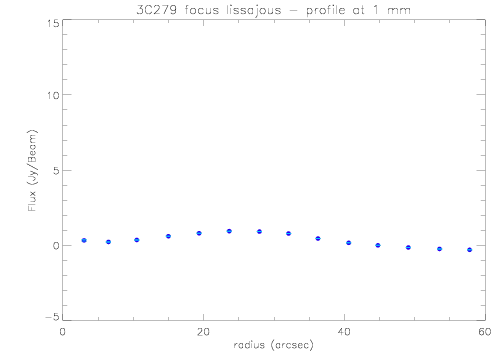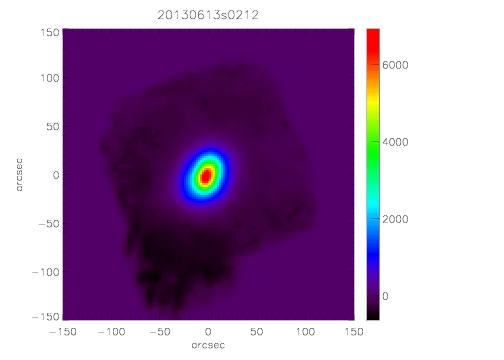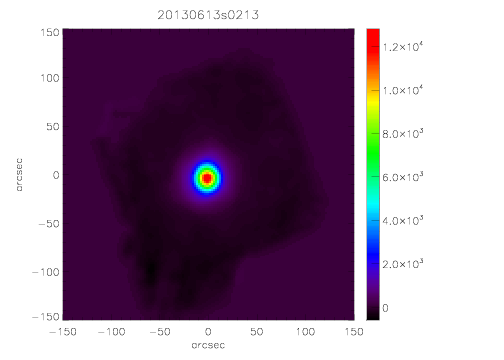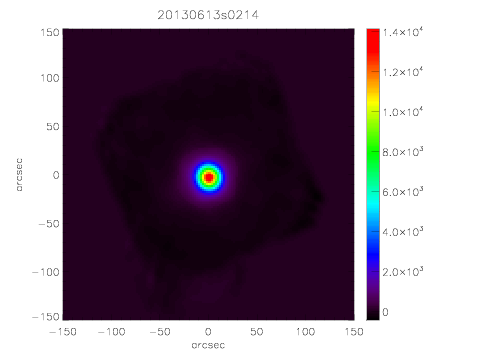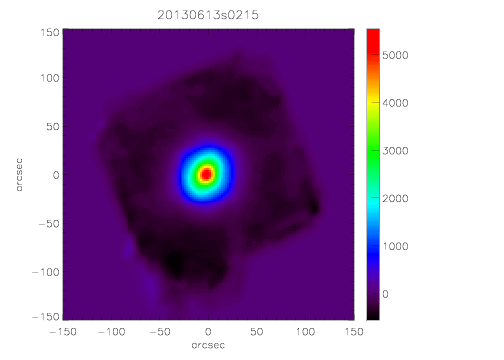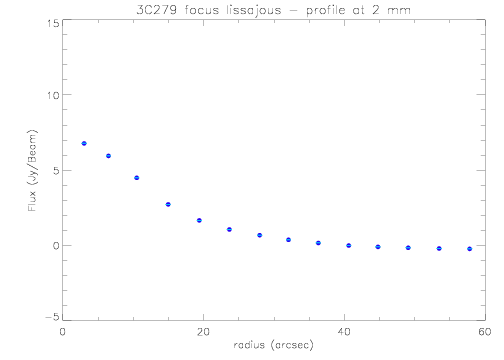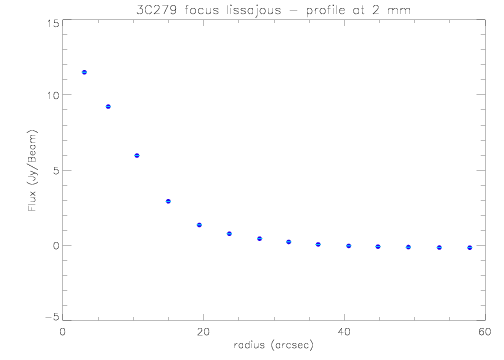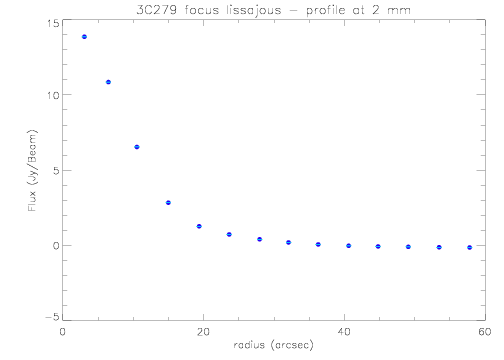|
Size: 2298
Comment:
|
Size: 2304
Comment:
|
| Deletions are marked like this. | Additions are marked like this. |
| Line 9: | Line 9: |
| .The maps are for focuses: .-1.2 mm --- -1.8 mm --- -2.4 mm --- -3.0 mm --- -3.6 mm |
.The maps are for the focus: .-1.2 mm ---- -1.8 mm ---- -2.4 mm ---- -3.0 mm ---- -3.6 mm |
Focus with lissajous scans using the quasar 3C279
- Since the opacity is very high for the Run6, the crosses are not always sufficient for focus estimations. Therefore, we also use short lissajous scans that we perform at different focuses in order to estimate the best value.
Online analysis
- The maps are fitted with a gaussian that gives the amplitude, the FWHM and the ellipticity of the beam. These values are fitted against the focus with a parabola to give the best focus.
- The best focus is found to be around -1.5mm in this example.
- The maps are for the focus:
-1.2 mm
-1.8 mm
-2.4 mm
-3.0 mm
-3.6 mm
|
|
|
|
|
|
Offline analysis
- We show here an offline processing of the maps with theis profiles for 5 values of the focus (this is not for the same scans).
1mm

